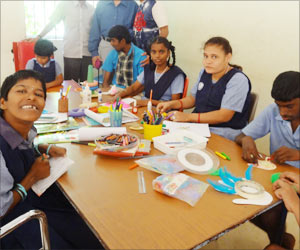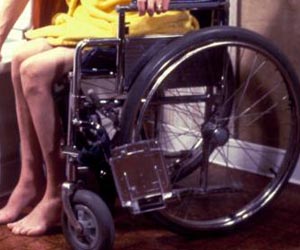Racial and ethnic minority children in the United States are less likely than their Caucasian peers to be identified as disabled and underrepresented in the special education system, finds a new federally funded study.
The study was undertaken jointly by researchers at Pennsylvania State University and the University of California.The researchers analyzed five disability conditions in children - learning disabilities, language impairments, intellectual disabilities, health impairments and emotional disturbances.
The study also noted that language minority children or children who speak substandard English are less likely than otherwise similar children from standard English-speaking homes to be recognized as having learning disabilities or speech or language impairments.
The researchers say that these results contrast with current federal legislation and policies.
The US policy makers have regularly attempted to bring down what has been identified to be minority overrepresentation in special education.
Authorities with the education department are currently planning to issue further compliance monitoring guidelines regarding minority overrepresentation.
In the study, multi-year longitudinal and national level data from the U.S. Department of Education was analyzed. The researchers considered children's academic achievement and behavior, physical characteristics, family socioeconomic status and health insurance, and their state of residence, among other factors.
The research concludes that the underrepresentation of racial and ethnic minority children is evident throughout elementary and middle school.
The study results include:
- African American kids have odds of learning disability identification that are 58% lower than their Caucasian peers.
- African American kid's odds of identification for language impairments, intellectual disabilities, health impairments, and emotional disturbances are, 63%, 57%, 77%, and 64% respectively, that are lower than their Caucasian peers.
- Hispanic kids (Spanish-speaking kids, especially one of Latin American descent, living in the US) have odds of learning disability, language impairments, or other health impairments that are, respectively, 29%, 33%, and 73% lower than their Caucasian peers.
- Kids from non-English-speaking families have odds of learning disabilities or language impairment identification that are, respectively, 28% and 40 % lower than their Caucasian peers.
- Kids have no health insurance cover are less likely to be recognized as having speech or language impairments.
- Kids from lower income and undereducated families are less likely to be recognized as having other health impairments.
They also suggest that authorities with an education department should be more attentive to cultural and language barriers that may retain racial and ethnic minority children with disabilities from being appropriately identified.
"Untreated disabilities increase children's risk for many adversities, including persistent academic and behavioral difficulties in school. As a matter of social justice, we should work to ensure that all children with disabilities, regardless of their race, ethnicity, or language use, receive the care they need," Morgan said.
References:
1. P. L. Morgan, G. Farkas, M. M. Hillemeier, R. Mattison, S. Maczuga, H. Li, M. Cook. Minorities Are Disproportionately Underrepresented in Special Education: Longitudinal Evidence Across Five Disability Conditions. Educational Researcher, 2015; DOI: 10.3102/0013189X155911572. http://www2.ed.gov/parents/needs/speced/edpicks.jhtml
3. https://en.wikipedia.org/wiki/Race_and_ethnicity_in_the_United_States
Source-Medindia









